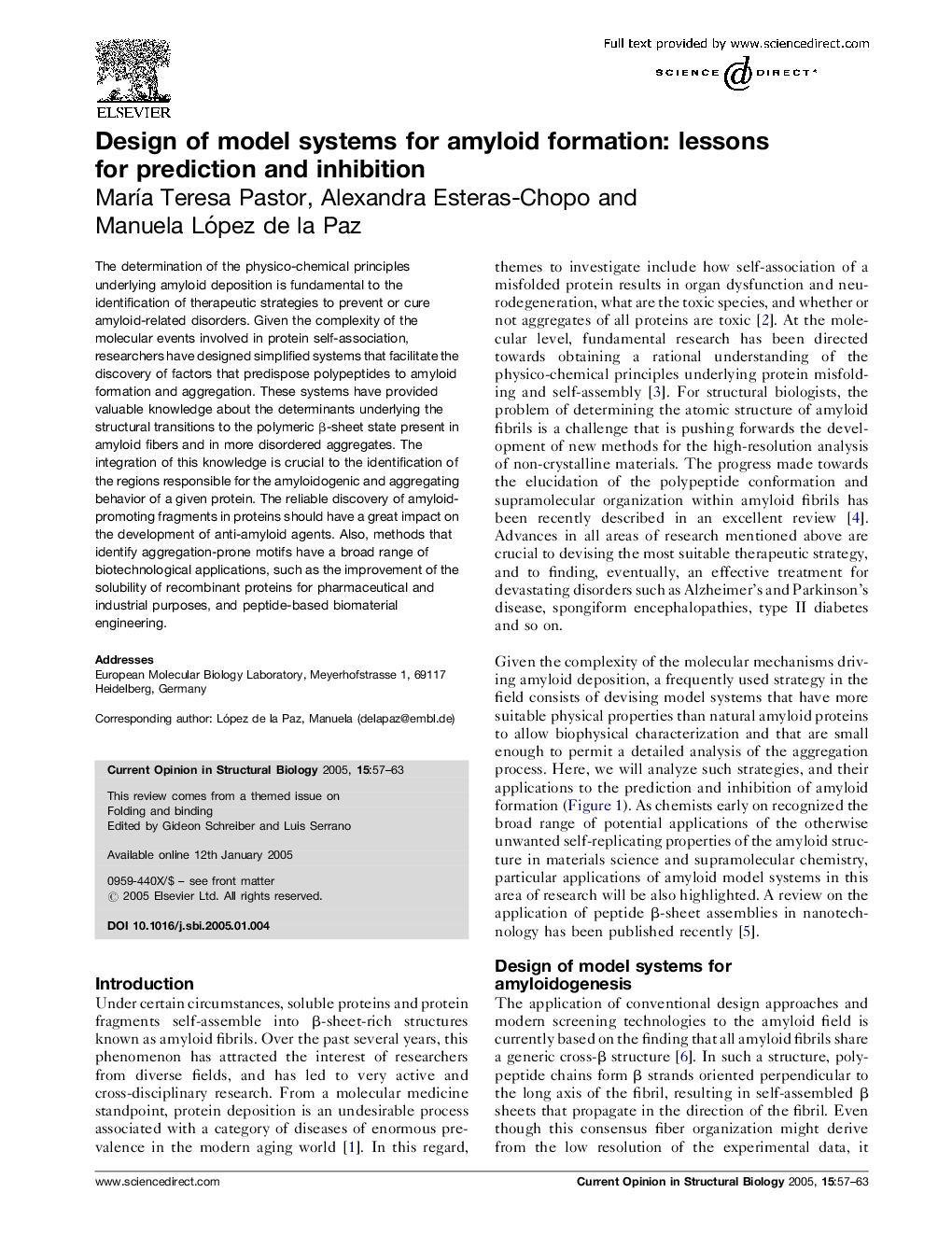| Article ID | Journal | Published Year | Pages | File Type |
|---|---|---|---|---|
| 10822883 | Current Opinion in Structural Biology | 2005 | 7 Pages |
Abstract
The determination of the physico-chemical principles underlying amyloid deposition is fundamental to the identification of therapeutic strategies to prevent or cure amyloid-related disorders. Given the complexity of the molecular events involved in protein self-association, researchers have designed simplified systems that facilitate the discovery of factors that predispose polypeptides to amyloid formation and aggregation. These systems have provided valuable knowledge about the determinants underlying the structural transitions to the polymeric β-sheet state present in amyloid fibers and in more disordered aggregates. The integration of this knowledge is crucial to the identification of the regions responsible for the amyloidogenic and aggregating behavior of a given protein. The reliable discovery of amyloid-promoting fragments in proteins should have a great impact on the development of anti-amyloid agents. Also, methods that identify aggregation-prone motifs have a broad range of biotechnological applications, such as the improvement of the solubility of recombinant proteins for pharmaceutical and industrial purposes, and peptide-based biomaterial engineering.
Related Topics
Life Sciences
Biochemistry, Genetics and Molecular Biology
Biochemistry
Authors
MarÃa Teresa Pastor, Alexandra Esteras-Chopo, Manuela López de la Paz,
